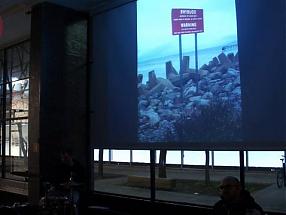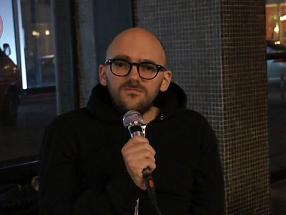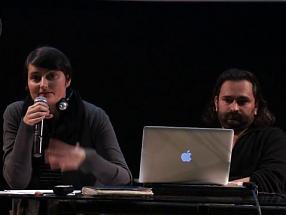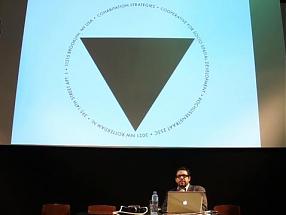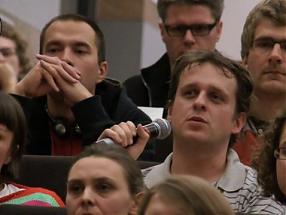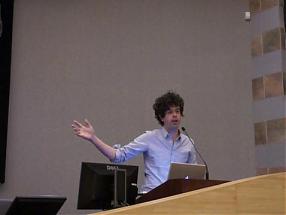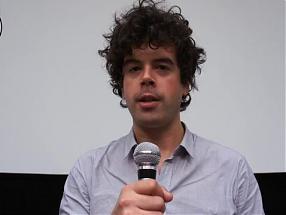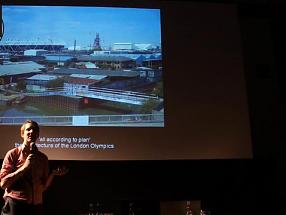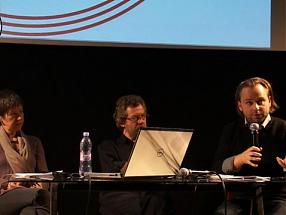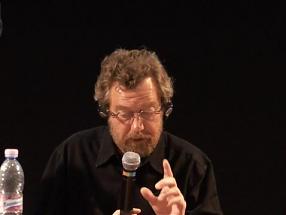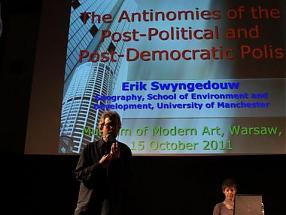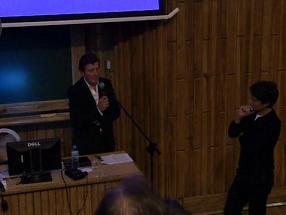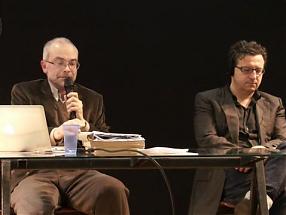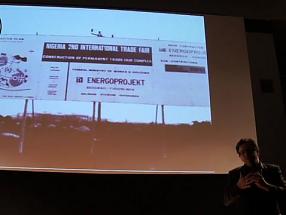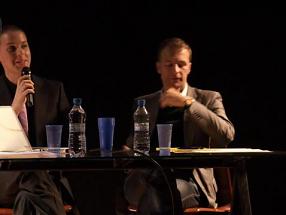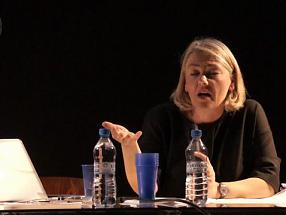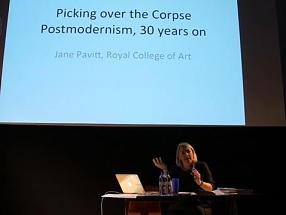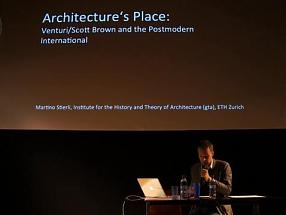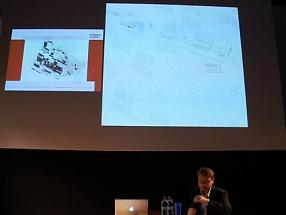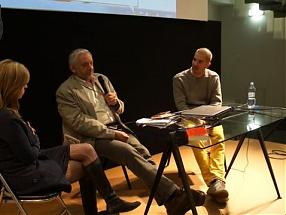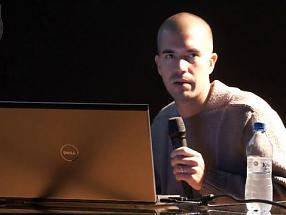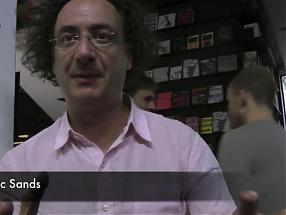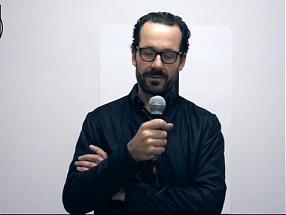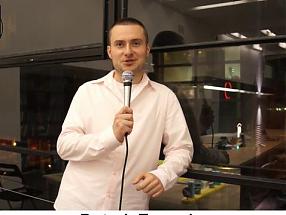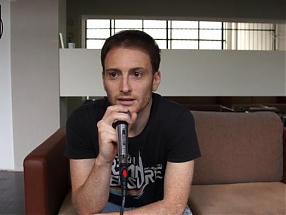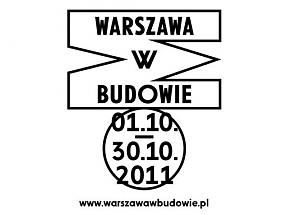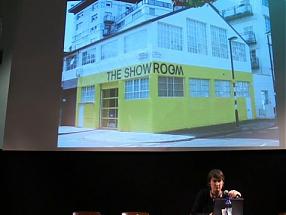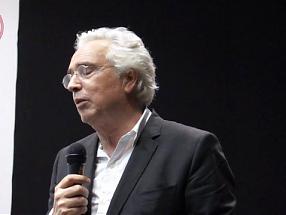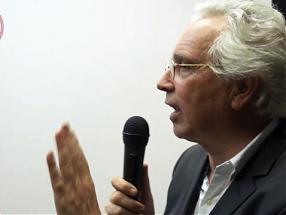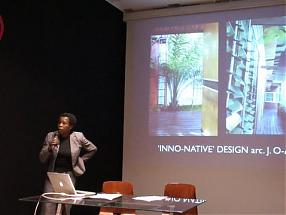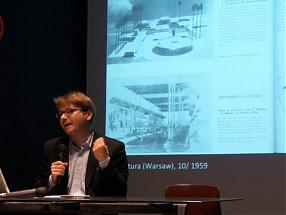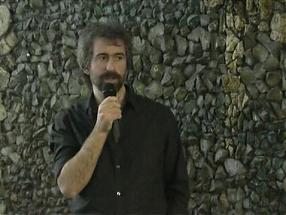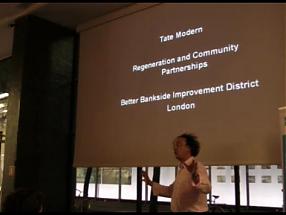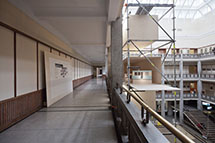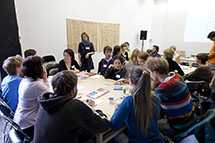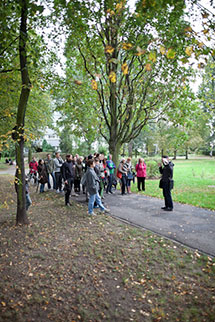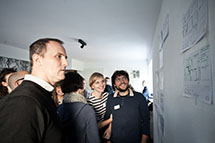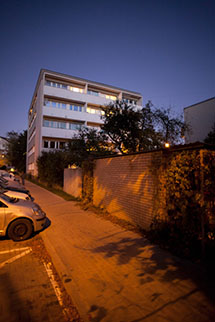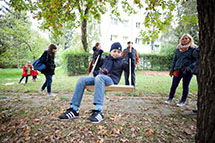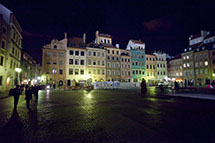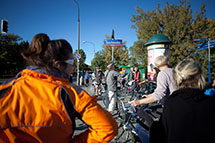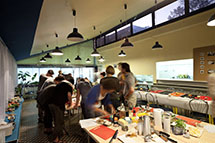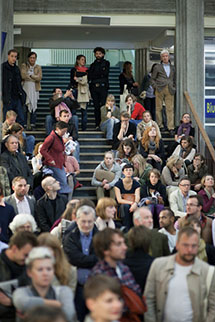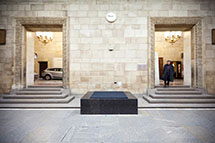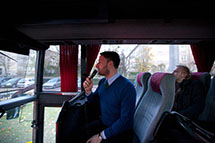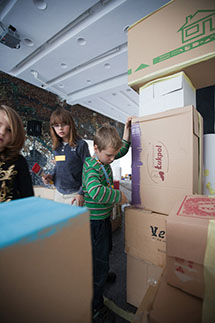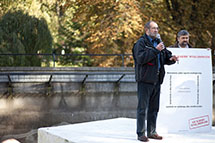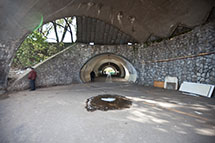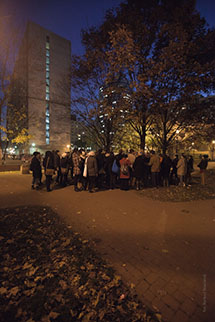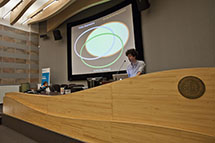WARSAW UNDER CONSTRUCTION 3
Back to the city
The third edition of the WARSAW UNDER CONSTRUCTION festival offered over sixty events: exhibitions, lectures, trips, workshops, film screenings and special projects.
The program of the festival attempted to answer three questions, so important to any resident of Warsaw: How can we live cheaper and more comfortably? What can we do to improve our city? How to restore spacial order in Warsaw?
The main exhibition is titled "Back to the City" and was shown in the spectacular Parachute Hall at Warsaw School of Economics (SGH). The main building of SGH together with its hall was designed in 1924 by architect Jan Witkiewicz Koszczyc and accomplished right after the World War II. Its architecture is unique and is an unrivalled example of a model public use building. For the exhibition "Back to the City," three towers were constructed – each of them being dedicated to one of the problems the festival attempts to address. On each tower the visitors could find materials prepared by think tanks set up by the Museum of Modern Art in Warsaw.
HOUSING
Is it possible to build cheaper apartments nowadays? How to live without having to take out a 30-year mortgage loan? How to design the interior of your tiny apartment when it is the only one you can afford? The housing policy is dear to most of young adults, thus for the students of SGH and the majority of the Museum’s audience. In the course of the WARSAW UNDER CONSTRUCTION, festival housing will be the subject of numerous workshops and trips around the city. The architects will teach how to design the interior of our own apartment, and the housing specialists will explain how to set up a housing cooperative.
SPACIAL PLANNING
Spatial planning is what the newly built housing estates lack – as a result, they are devoid of roads, sidewalks or services. Is the Wilanów Town a luxurious desert? Can the gated communities be compared to jails? The exhibition will not only make aware of today’s shortcomings but also suggest how to improve housing in Warsaw.
PARTICIPATION
Should the residents be actively involved in the affairs of their city or district? Or had they better not? Another issue is the postmodern architecture built after 1989 – and its roots in the previous contracts in postcolonial North Africa and Middle East which the architects and builders drew their inspiration from.
Like every year, WARSAW UNDER CONSTRUCTION 3 included popular trips. This time they were also dedicated to suburbs and the outskirts of the city: the Asian town developing around the Vietnamese trade center in Wólka Kosowska, Kępa Rozwadowska, where greenhouses and gardens give way to rampant development of housing estates. A famous culture anthropologist, professor Roch Sulima, showed round Grochów allotment gardens. Trip participants had a chance to admire the beautiful balconies in the vast housing estates (is a suburban house with a garden better than an apartment with a balcony in the city?), depopulated areas if the city center now dominated by office blocks, and the disused sport facilities. Grzegorz Łapanowski, the indefatigable enthusiast of good food, invited all to make preserves from autumn fruit. His workshops took place in the Żoliborz district, and assume a character of a neighborhood block party – a thing worth popularizing in whole Warsaw.
The main exhibition – "Back to the City" – was complemented by lectures and workshops. A prominent American architect of German origin, Helmut Jahn, talked about his project for the Potsdamer Platz – a public square in downtown Berlin, criticized by some but praised by others. What is interesting – unlike the Parade Square (Plac Defilad) in downtown Warsaw – the Potsdamer Platz was accomplished in only a few years and according to a meticulous plan.
Urbanists and architects demonstrated how to convert a dull and unfriendly place like Park Świętokrzyski into an attractive spot full of greenery in the very center of the future downtown Warsaw. They will also propose a plan for the Warsaw Embankment in order to create a lively urban spot for culture and entertainment. Architects together with city activists showed the fruits of shared work on the design of squares for city sports in two different locations: Zielna Street downtown and the housing estate "Przyjaźń" (“Friendship”) in the Bemowo district. Guests from Kiev and London shared experiences with the construction of stadiums for the next year’s European Soccer Championship Euro 2012 and Summer Olympics respectively. What mistakes have been made? Is there enough time to correct them? What should be done for the Praga district to benefit from Euro 2012? The majority of sessions and debates will take place in the Festival Auditorium located in the Kisielewski Room in Palace of Culture and Science,
The sessions of The Department of Proposals, so popular in the previous editions of WARSAW UNDER CONSTRUCTION, “went out on the town” and visited the districts of Białołęka, Praga Północ, Żoliborz and Ursynów. District mayors and officers participated in each session d, and each participant had ten minutes to present their own idea. In the Krakowskie Przedmieście pavilion the audience had a chance to meet its designer – Olafur Eliasson, one of the most respected contemporary artists, creator of such installations as "The Weather Project" – the famous artificial sunset exhibited in Tate Modern in London. He talked about his fascination with Berlin, which is the “hero” of his widely commented exhibition "Inner City Out" (2010). The exhibition extracts the everlasting changeability of the cityscape and presents the response of human senses to this changeability.
The senses were aroused by the installation by a prominent British artist of the younger generation Ryan Gander – "Really Shiny Things That Don’t Mean Anything." It is a huge magnetic ball, sparkling with a multitude of metal objects, which will be placed in the long forgotten and neglected Honorary Tribune in the Parade Square (Plac Defilad) in the very center of Warsaw. The metallic ball is here to remind all people that this is “the middle” of Warsaw and it is here that the city life must come back to.
A separate project being part of WARSAW UNDER CONSTRUCTION 3 – connected with design – was the exhibition BLACK² authored by Germany’s Konstantin Grcic, one of the most recognized designers in the world. BLACK² presented the analysis of the "black square” – a motif widely utilized in design nowadays – using a range of iconic products whose form is a black square.
